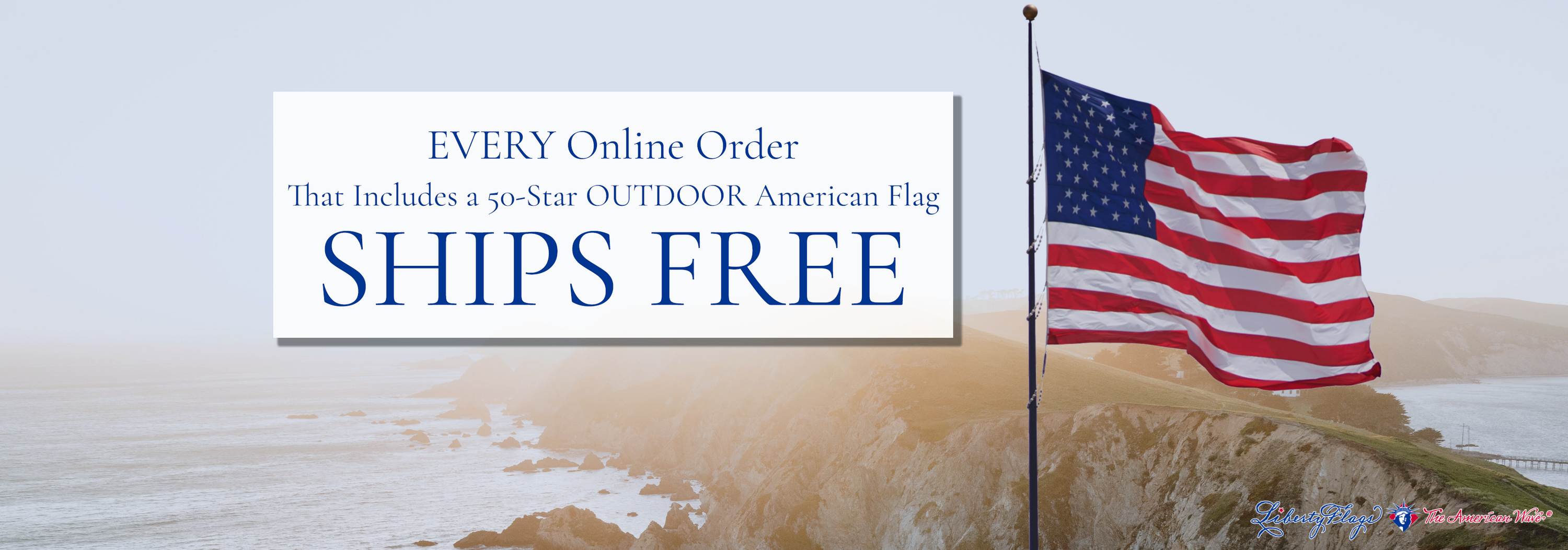Three checkpoints for gauging the quality of your American flag
Every American flag is as unique as the environment in which it is flown (outdoor flags in particular), and every American flag flyer has a different — even if only slightly — interpretation of what makes their flag important and valuable. In fact, value is interpreted in countless ways. Nonetheless, here are three guidelines every flag owner can refer to when determining the current quality of their flag.
Be sure to watch our Flag Fabric video series to learn which flag fabric is best for your needs.
1. Made in the USA
The FMAA, the Flag Manufacturers Association of America, mandates that American-made American flags be manufactured according to a set of specifications that highlight and guarantee the domestic sourcing of materials and labor. As such, American flags made 100% in the United States can be identified by the appearance of the FMAA rectangular logo and oval seal.
Flags that are mass produced outside of the United States and do not follow the same standards of quality that flags made in the U.S.A. offer. The FMAA seal that always appears next to the LIBERTY FLAGS, The American Wave® logo is the only sure way to know that your flag is made in America with domestically sourced materials.Where your flag is made can be a good indicator of how well it is made. All LIBERTY FLAGS ceremonial flags are made in the U.S.A.
2. Tailor made
Some people mistakenly determine the quality of a flag based upon whether or not the flag’s parts are sewn together or printed onto the fabric. The process for generating flag imagery is actually more a question of the intricacy of the details than it is a matter of craftsmanship. For example, many state flag designs are printed because the details are too intricate to be consistently manufactured at top quality, or are too complex to make machine embroidery possible. Conversely, flag designs like that of the American flag are more likely to be sewn.
Refer to this guide to the components of quality flag construction for more detailed information. On this point, it is also good to refer again to the label on the flag, and look for the FMAA certification.
3. Speed and substance
A quality flag is made of a fabric that is best suited to the environment in which it will be flown.
In brief, cotton flags offer a classic appearance, but tend not to weather outdoors as well as nylon or polyester. Nylon flags are less likely to fade under intense sunlight. Finally, polyester flags are hardier and better withstand heavy winds or unpredictable, harsh weather conditions. The popular G-Spec line offers fine quality cotton and nylon American flags meeting rigid government specifications.
Photo call!
Send us your pictures of American flags, flagpoles, ropes, or other accessories! We would be honored to feature your photography in our blog or on Facebook. Remember, photos of damaged flags and accessories are valuable, too.
Was this information useful to you?
Do you have suggestions for information you'd like to see here? If so, please send them our way!
Please send all of your suggestions or questions to service@LibertyFlags.com. We want to hear from you!
Have a great day, from your friends at LIBERTY FLAGS, The American Wave®.

